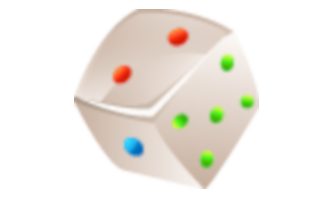Forces in fluids
Science, Grade 6
Forces in fluids
Study Guide

Forces in fluids
Flash Cards

Forces in fluids
Quiz

Forces in fluids
Worksheets

Forces in fluids
Games

Study Guide Forces in fluids Science, Grade 6
❮
1
/
3
❯
FORCES IN FLUIDS Calculating Pressure Pressure is calculated by dividing force by area and is measured in units called pascals. For an example, if a force of 10 newtons was exerted over an area of 2 square centimeters, the pressure would be 5 pascals. Lesson Checkpoint: What is pressure and how is it calculated? Pressure in Fluids In fluids, which are substances that can flow, pressure is the sum of each of the forces of each particle in the fluid. Examples of fluids include liquids such as water and gases such as air and helium. The amount of pressure in a fluid can vary. In the atmosphere, as you go higher, the amount of air pressure decreases. However, in an ocean, as you go down further, the water pressure increases. In the atmosphere, at higher elevations there is less air available to press down on you and in the ocean, as you go deeper, there is more water above you pressing down. Lesson Checkpoint: What effect does a change in elevation or depth have on fluid pressure? © Copyright NewPath Learning. All Rights Reserved. Permission is granted for the purchaser to print copies for non-commercial educational purposes only. Visit us at www.NewPathLearning.com.
Buoyancy Buoyancy, or the tendency to float, is the result of unequal fluid pressure exerted on a person or object. At the surface, fluid pressure is greater under an object than above the object with the net result being an upward or buoyant force. If the density of an object is too great, it will not be able to float. Density is the amount of mass per unit of volume. Since gravity has the effect of pulling down objects of greater mass, some objects will sink because the buoyant force upwards is not strong enough to overcome the force of gravity. Density can be calculated by dividing the mass of an object by its volume. Lesson Checkpoint: What is buoyancy and what is its relationship to density? Pascal’s Principle If force is applied to a fluid confined in a container, there is an equal change in pressure applied in all directions. This principle is referred to as Pascal’s principle. In the picture, note how pressure applied from the side of the bottle causes in increase in pressure in all directions inside the bottle. This principle forms the basis for hydraulic equipment. In a machine operated by hydraulics, pressure on a confined fluid gets transferred to a larger surface. The result is a large increase in force on that surface. © Copyright NewPath Learning. All Rights Reserved. Permission is granted for the purchaser to print copies for non-commercial educational purposes only. Visit us at www.NewPathLearning.com.
Bernoulli’s Principle According to Bernoulli’s principle, when the speed of a fluid is increased, the pressure in that fluid decreases. This principle is the basis for how a plane lifts off the ground and flies. The wings of a plane are designed so that the fluid above the wing, which is air, goes faster than the air below the wing. The result is a decrease in downward pressure on the plane. When this occurs, the pressure lifting the plane becomes greater than the pressure pushing down on the plane. At this point, the plane is able to take off and as long as it holds its speed, it will stay up despite the force of gravity. Lesson Checkpoint: Explain Pascal’s Law and Bernoulli’s Principle © Copyright NewPath Learning. All Rights Reserved. Permission is granted for the purchaser to print copies for non-commercial educational purposes only. Visit us at www.NewPathLearning.com.
